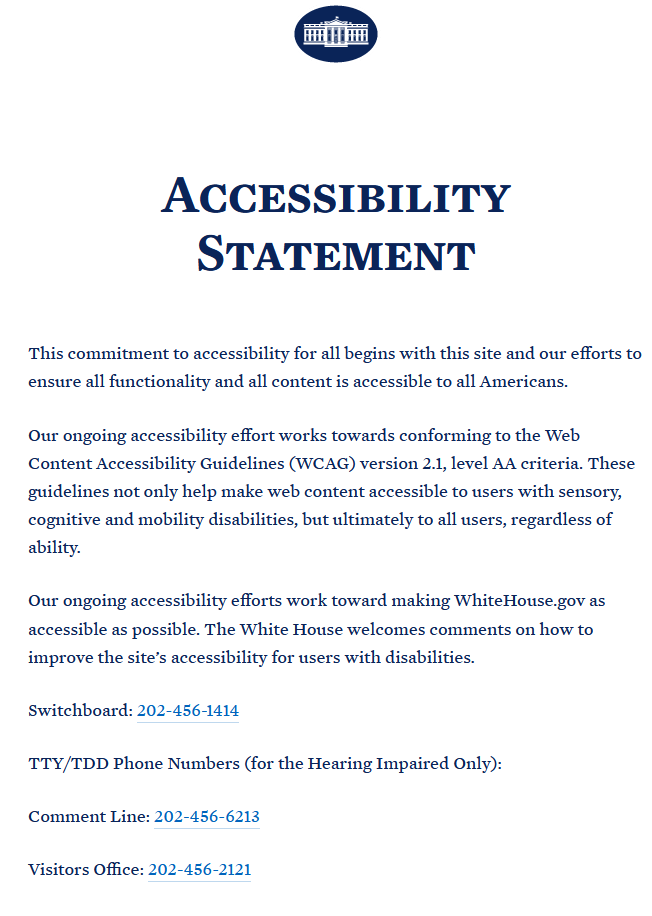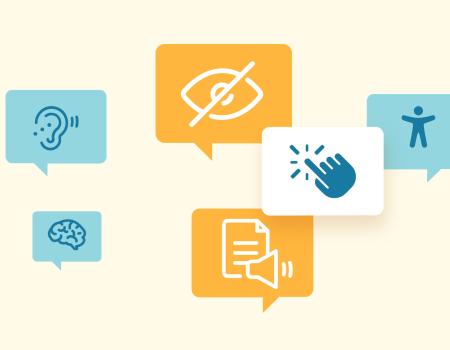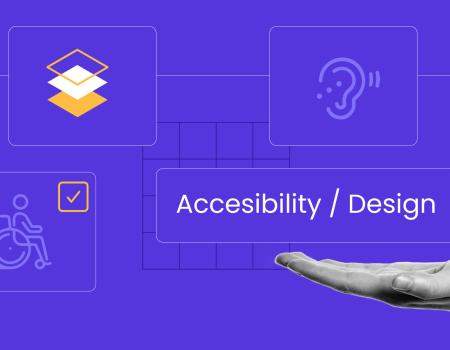What's the Difference Between Section 508 and WCAG?
Almost immediately after President Joe Biden was sworn into office this January, Whitehouse.gov changed. The site, which had gone through a move to WordPress from Drupal under Trump, transferred to the Biden administration. The site stayed in the same CMS but also made some changes to the layout.
Within the day, Whitehouse.gov was lauded for a new accessibility statement on the site. The statement at least acknowledging the need for and actively working towards a more accessible website.
Whitehouse.gov was working towards meeting the Web Content Accessibility Guidelines (WCAG) 2.1 criteria.

There was also a small box on the side of Whitehouse.gov which gives users the option for high contrast mode and a larger font size, two features that improve accessability.
Every federal website must be in compliance with the United State’s own accessibility laws which are codified in Section 508 of the Rehabilitation Act of 1973.
So, what’s the difference between Section 508 and the WCAG?
The Web Content Accessibility Guidelines and Section 508 have the same goal; to make information and communication more accessible to everyone. But Section 508 and WCAG have different roles.
What is Section 508?
Section 508 is a federal law. It's part the Rehabilitation Act of 1973, a law that was initially intended to assist with job placement and training for people with disabilities.
That bill was vetoed by President Nixon two times before it passed again in a veto proof majority in 1973. Some members of the disability community advocated tirelessly for the bills passage.
The Rehabilitation Act of 1973 is perhaps most famous for Section 504, which guarantees rights to people who are disabled. The section also laid the foundation for future legislation like the Americans with Disabilities Act in 1990.
Section 508 of the Rehabilitation Act was added on to the law 1986 to address access to electronic and information technology. The original section of the law was mostly unenforceable. And it soon became outdated as the World Wide Web gained prominence.
A revised Section 508 was passed into law in 1998.
In essence, Section 508 mandates that when the federal government develops, procures, maintains, or uses electronic and communications technology it must be accessible to people with disabilities.
Non-compliance with Section 508 is handled through formal complaints and civil lawsuits.
What is WCAG or the Web Content Accessibility Guidelines?
WCAG is set of guidelines created by the World Wide Web Consortium (W3C).
Back in 1994, members of the W3C were attempting to ensure that the World Wide Web was accessible to everyone. The group compiled web accessibility guidelines the next year.
The first formal guide fro the World Wide Web Consortium, the WCAG 1.0, was published in 1999 and WCAG 2.0 was published in 2008.
WCAG 2.0 is meant to be technology agnostic. It incorporated 12 untestable guidelines under 4 principles: a website must be perceivable, operable, understandable, and robust.
The WCAG is a non-legally binding set of specific suggestions like: text and images of text has a contrast ratio of at least 4.5:1 unless under specific circumstances. Or, a website cannot contain something that flashes more than three times per second.
Section 508, on the other hand, is a federal law.
But they’re connected. In 2018, the U.S. Access Board, which steers laws around the Rehabilitation Act, incorporated WCAG into Section 508.
The GSA maintains a list of specific technical requirements for a website to be 508 compliant. They are nearly synonymous with the WCAG 2.1, level AA criteria.



